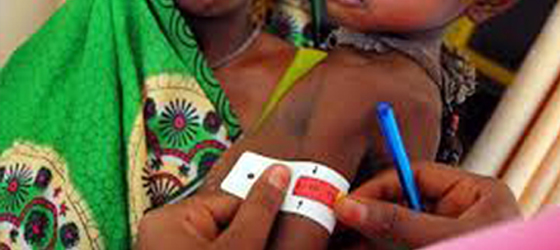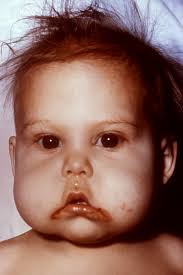Protein-Energy Malnutrition

It is a potentially fatal body-depletion disorder. It is the leading cause of death in children as a result of deficient intake and/or utilization of food. PEM covers a wide spectrum of clinical stages ranging from the severe forms like kwashiorkor and marasmus to the milder forms in which the main detectable manifestation is growth retardation.
Causes
It is is a deficiency disease caused in the infants due to ‘Food Gap’ between the intake and requirement. While pure protein deficiency can occur when a person's diet provides enough energy but lacks an adequate amount of protein, in most cases deficiency will exist in both total calorie and protein intake.
Types of PEM

- Primary PEM results from a diet that lacks sufficient sources of protein and energy.
- Secondary PEM usually occurs as a complication of AIDS, cancer, chronic kidney failure, inflammatory bowel disease, and other illnesses that impair the body's ability to absorb or use nutrients or to compensate for nutrient losses.
- Kwashiorkor, also called wet protein-energy malnutrition, is a form of PEM characterized primarily by protein deficiency.This condition usually appears at about the age of 12 months when breast-feeding is discontinued, but it can develop at any time during a child's formative years.
- Marasmus, a PEM disorder, is caused by total calorie/energy depletion rather than primarily protein calorie/energy depletion. Marasmus is characterized by stunted growth and wasting of muscle and tissue. Marasmus usually develops between the ages of six months and one year in children who have been weaned from breast milk or who suffer from weakening conditions such as chronic diarrhea.
Diagnosis
A thorough physical examination is performed to assess
- Eating habits and weight changes
- Body-fat composition and muscle strength
- Gastrointestinal symptoms
- Presence of underlying illness
- Developmental delays and loss of acquired milestones in children
- Nutritional status
Doctors further examines a patient's nutritional status by:
- Comparing height and weight to standardized norms
- Calculating body mass index (BMI)
- Measuring skinfold thickness or the circumference of the upper arm
Treatment
Severe malnutrition or PEM require intensive care and should be referred to a hospital for initial treatment. Nutrition intervention is the primary consideration. The child should be given a diet providing sufficient quantities of calories and proteins, with an increase in amounts gradually without provoking vomiting or diarrhoea.
Copyright©2015 Amrita CREATE All Rights Reserved

 Learn
Learn
 Practice
Practice
 Offline
Offline


 Tools
Tools


